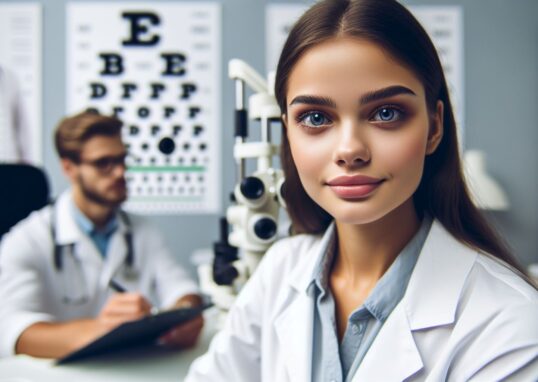
Understanding Macular Degeneration
Age-related macular degeneration (AMD) is a medical condition that predominantly impairs the central part of the retina called the macula, which is crucial for sharp and detailed vision. While it typically affects individuals in their 50s and 60s, it can occur at other ages as well. AMD is the leading cause of severe vision loss among older adults, but it does not lead to complete blindness. Instead, it compromises the ability to see fine details, which can hinder routine tasks such as reading, driving, and recognizing faces.
There are two main types of AMD: dry and wet. Dry AMD is more common and progresses slowly, potentially taking several years to reach advanced stages. It occurs when the macula thins over time, gradually diminishing central vision. Wet AMD is less prevalent but more aggressive and can cause significant vision loss within weeks or months. It develops when new, abnormal blood vessels grow under the retina, leaking blood and fluid, which damages the macula.
The exact cause of AMD is not fully understood, but several risk factors have been identified. These include smoking, which can double the risk of AMD; high blood pressure; obesity; and a family history of the condition. Genetics also play a role, with certain genes being associated with an increased risk of AMD.
Lifestyle changes can help manage and slow the progression of AMD. These include quitting smoking, maintaining normal blood pressure and weight, and following a diet rich in leafy greens and fish. For those with wet AMD, treatments such as anti-VEGF injections can help reduce the number of abnormal blood vessels in the retina or slow their leakage, which helps to preserve vision.
Regular eye exams are essential for detecting AMD early and starting treatment promptly. Early detection and treatment can help slow the progression of the disease and preserve vision, allowing individuals to maintain their quality of life.
What is the Macula?
The macula is an oval-shaped pigmented area near the center of the retina. The retina is a light-sensitive layer that lines the back of the eye. It is made up of 200 million neurons, but is only about .2 millimeters thick. The retina contains photoreceptors that absorb light and then transmit those light signals through the optic nerve to the brain. The macula is part of your eye that processes what you see directly in front of you (your central vision). It’s part of your retina and is key to your vision. The macula is the round area at the center of your retina, at the back of your eyeball.
What is the Retina?
The retina is a layer of cells positioned at the back of your eyeball. This layer senses the light that comes into your eyeball and sends signals to your brain. The key retina parts include the rods and cones, which convert light into electrical signals for the brain, and the macula, which allows you to see details clearly. The retina is made of two parts, the macula and the peripheral retina. The macula is in the center of your retina and processes most of what you’re directly looking at. The peripheral retina fills in the parts of your vision at the edges of your visual field (your peripheral vision).
Damage to the Retina
Retinal disorders encompass a range of conditions that can lead to various visual disturbances. The retina, a thin layer of tissue at the back of the eye, is crucial for capturing light and converting it into neural signals for the brain to interpret as images. When the retina is damaged or affected by disease, it can lead to symptoms such as flashes of light, floating spots (floaters), or blurred vision.
Age-related macular degeneration (AMD) is one of the most common retinal disorders. It primarily affects the macula, the central region of the retina responsible for detailed vision, leading to a loss of central vision. There are two types of AMD: ‘dry’ and ‘wet.’ Dry AMD progresses slowly and is characterized by thinning of the macula, while wet AMD can cause rapid vision loss due to abnormal blood vessel growth.
A macular hole is a small break in the macula that can cause blurred and distorted central vision. Macular pucker, on the other hand, occurs when scar tissue forms on the macula’s surface, leading to visual distortion and sometimes blurred vision.
Retinal vein occlusion happens when a vein in the retina becomes blocked, causing blood and other fluids to leak into the retina, leading to swelling and blurred vision. Similarly, retinal artery occlusion involves the blockage of an artery, which can result in sudden vision loss.
Retinal detachment is a serious condition where the retina pulls away from its normal position. It can cause symptoms like a sudden increase in floaters, flashes of light, and a shadow over the field of vision. Without prompt treatment, retinal detachment can lead to permanent vision loss.
Eye floaters and flashes are common and usually harmless, but they can also signal more serious issues like retinal detachment. Posterior vitreous detachment occurs when the vitreous, a gel-like substance filling the eye, separates from the retina, often causing floaters and flashes.
Other conditions that can lead to retinal damage include diabetic retinopathy, where high blood sugar levels cause damage to the blood vessels in the retina; retinal tears, which can lead to detachment if untreated; glaucoma, a group of eye conditions that damage the optic nerve; retinitis pigmentosa, a genetic disorder that leads to loss of night vision and peripheral vision; and vein occlusion, similar to retinal vein occlusion.
Many of these conditions can cause significant visual symptoms, and some, if left untreated, can result in blindness. Therefore, regular eye examinations are essential for early detection and treatment to preserve vision. Treatments vary depending on the condition but may include medication, laser therapy, surgery, or lifestyle changes. Maintaining good control of underlying health conditions, like diabetes and high blood pressure, can also help prevent retinal disorders.
Here’s a list of additional resources about age-related macular degeneration (AMD):
- Johns Hopkins Medicine
- Article: Age-Related Macular Degeneration (AMD)
- Description: This resource provides comprehensive information on the symptoms, diagnosis, and treatment options for AMD.
- American Academy of Ophthalmology
- Article: What Is Macular Degeneration?
- Description: Published on November 13, 2023, this article explains AMD as a problem with the retina, occurring when the macula is damaged.
- National Eye Institute
- Article: Age-Related Macular Degeneration (AMD)
- Description: Dated June 22, 2021, it discusses how AMD can blur central vision due to aging-related damage to the macula.
- Cleveland Clinic
- Article: Macular Degeneration: Symptoms, Diagnosis & Treatment
- Description: This article, updated on February 14, 2023, talks about the age-related retinal condition and the two types of macular degeneration—wet and dry.
- Mayo Clinic
- Article: Dry macular degeneration – Symptoms and causes
- Description: On November 23, 2022, Mayo Clinic published this article detailing dry macular degeneration, a common disorder causing blurred or reduced central vision.
- WebMD
- Article: Age-Related Macular Degeneration (AMD)
- Description: As of June 15, 2023, this article describes AMD as an eye disease that worsens over time and is a leading cause of serious, permanent vision loss.





